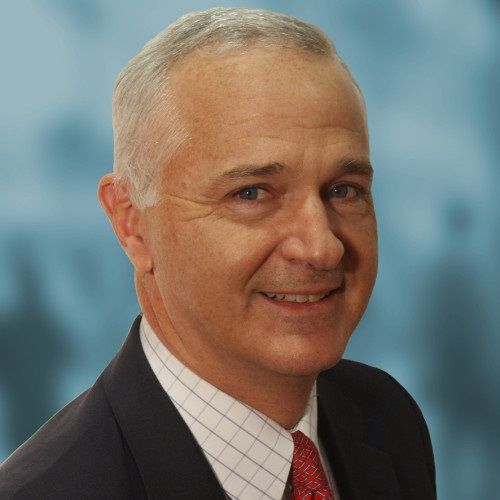Blog
Article
Integrating behavioral health with primary care benefits people and communities who need it most
Author(s):
Providing behavioral health services through primary care can help solve the mental health crisis.
© Chinnapong - stock.adobe.com

Millions in the United States struggle with behavioral health, with more than 80% perceiving a dramatic increase in mental health issues over the past five years, and many giving a poor to failing grade to the health care system for addressing these challenges. Recent data also show that more than 80% of people who need substance use disorder (SUD) treatment do not receive it. These problems are especially stark for the 88 million people covered by Medicaid and the Children’s Health Insurance Program (CHIP). These enrollees experience higher rates of mental illness and SUD compared to privately insured and uninsured individuals, and recent declines in Medicaid enrollment raise concerns about access to care.
Mental health care and addiction treatment offered in a primary care setting can help respond to this crisis. Enrollees can address physical and behavioral health needs in one place, reducing barriers to care. Early detection during primary care visits allows for timely interventions. Enrollees may feel more comfortable discussing behavioral health concerns with a primary care clinician. And being familiar with the primary care setting may increase enrollees’ ability to seek help.
Ann Greiner, MCP
© Primary Care Collaborative

Brandon G. Wilson, DrPH, MHA
© Community Catalyst

By implementing policies that promote stronger integration between mental health care and addiction treatment with primary care, the U.S. Centers for Medicare and Medicaid Services (CMS) can help Medicaid and CHIP enrollees get the care they need. In the longer term, such integration needs to be part of a broader conversation about how the United States can address behavioral health challenges and foster more comprehensive primary care, shaped by and accountable to all of the communities it serves.
It's difficult to access behavioral health care
Nearly one-in-three Medicaid enrollees have a mental illness and about one-in-five have a SUD. Many Medicaid enrollees with behavioral health conditions have low incomes and come from systemically excluded communities – including racial and ethnic minoritized populations, LGBTQ+ individuals, and those facing socioeconomic disparities – and are disproportionately affected by mental illness and SUDs.
Far too many Medicaid enrollees lack access to the support they need. A recent report from the U.S. Department of Health and Human Services Office of Inspector General found that less than 8% of enrollees received treatment from a behavioral health clinician, and just 38% of these clinicians serve Medicaid enrollees.
Medicaid’s lower payment rates, caps on what clinicians can charge beneficiaries, complicated contract designs, and unnecessarily burdensome regulations, as well as health plans not complying with parity rules and clinician shortages, have led to limited behavioral health clinician networks for patients. When enrollees can find a clinician, additional copays often prevent them from getting needed care. Red tape and financial burdens like premiums, deductibles, coinsurance, and copays each contribute to whether an enrollee receives, delays, or foregoes care. Routine check-ups become luxuries, and preventive screenings slip through the cracks. The consequences ripple outward. For example, medical debt accumulates, with often severe consequences, especially for Black patients.
Expanding access to behavioral health care improves outcomes
Bringing behavioral health and substance use treatment services into the purview of primary care improves access and helps patients and their clinicians address all health challenges. Evidence shows that this convenient, coordinated approach improves care, lowers costs, and creates a better patient experience.
Several Medicaid programs are promoting better integration by covering related billing codes; tying per-enrollee per-month payment to integrating behavioral health; and using their managed care contracts to define related requirements. States are showing success – and not always at a cost. A case study of one managed care plan’s alternative payment model in Colorado shows that more Medicaid enrollees received behavioral health services and that savings offset initial investments. Several states are leveraging community engagement to integrate behavioral health and primary care within Medicaid.
However, with 56 distinct Medicaid programs, CMS must take the lead to scale such evidence-based payment and delivery policy change, including:
- Removing cost-sharing for behavioral health treatment in primary care, which ensures that beneficiaries can seek care without financial strain and enhances the ability for clinicians to focus on patient engagement;
- Expanding coverage and rates for Collaborative Care and Primary Care Behavioral Health models, which will help expand clinician networks for patients, especially in underserved areas where behavioral health services are scarce and allow patients to benefit from a broader range of clinicians and services;
- Providing clear and regularly updated guidance to states on the design of population-based payment models that are inclusive of behavioral health integration;
- Developing CMS Innovation Center payment models that effectively facilitate whole-person care to encourage more primary care practices to begin integrating behavioral health; and
- Issuing guidance on the clinician training needed for successfully implementing equitable, comprehensive, integrated care that meets the needs of all people, especially people of color, LGTBQ+ people, and other marginalized groups.
These recommendations are the first step in addressing the behavioral health challenges the United States faces. But for patients being told to wait more than six weeks to see a therapist, for the 28 million untreated adults experiencing a mental illness, and for families who have lost loved ones to overdose or suicide, such meaningful progress toward accessible, integrated behavioral health services can’t come quickly enough.
Ann C. Greiner, MCP, is president and CEO of the Primary Care Collaborative.
Dr. Brandon G. Wilson, DrPH, MHA, is the co-interim president and CEO, Community Catalyst.





